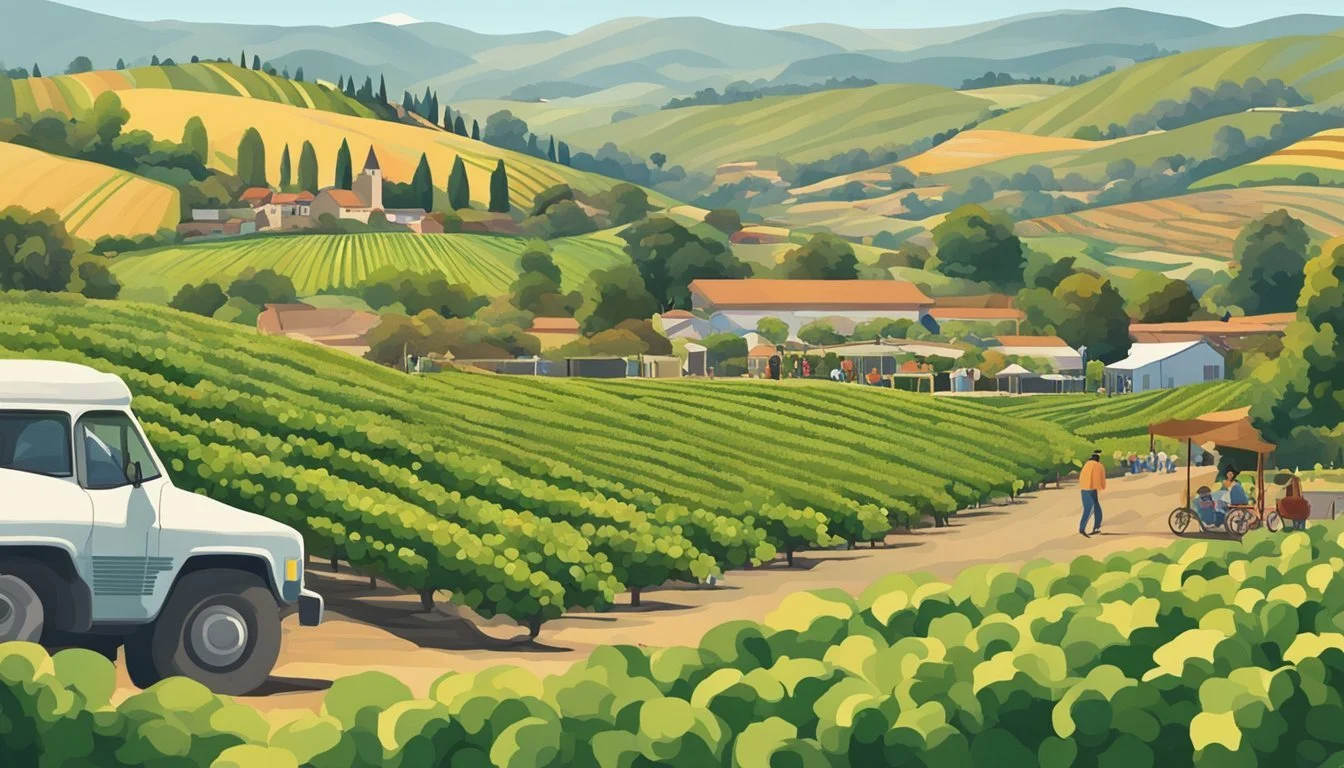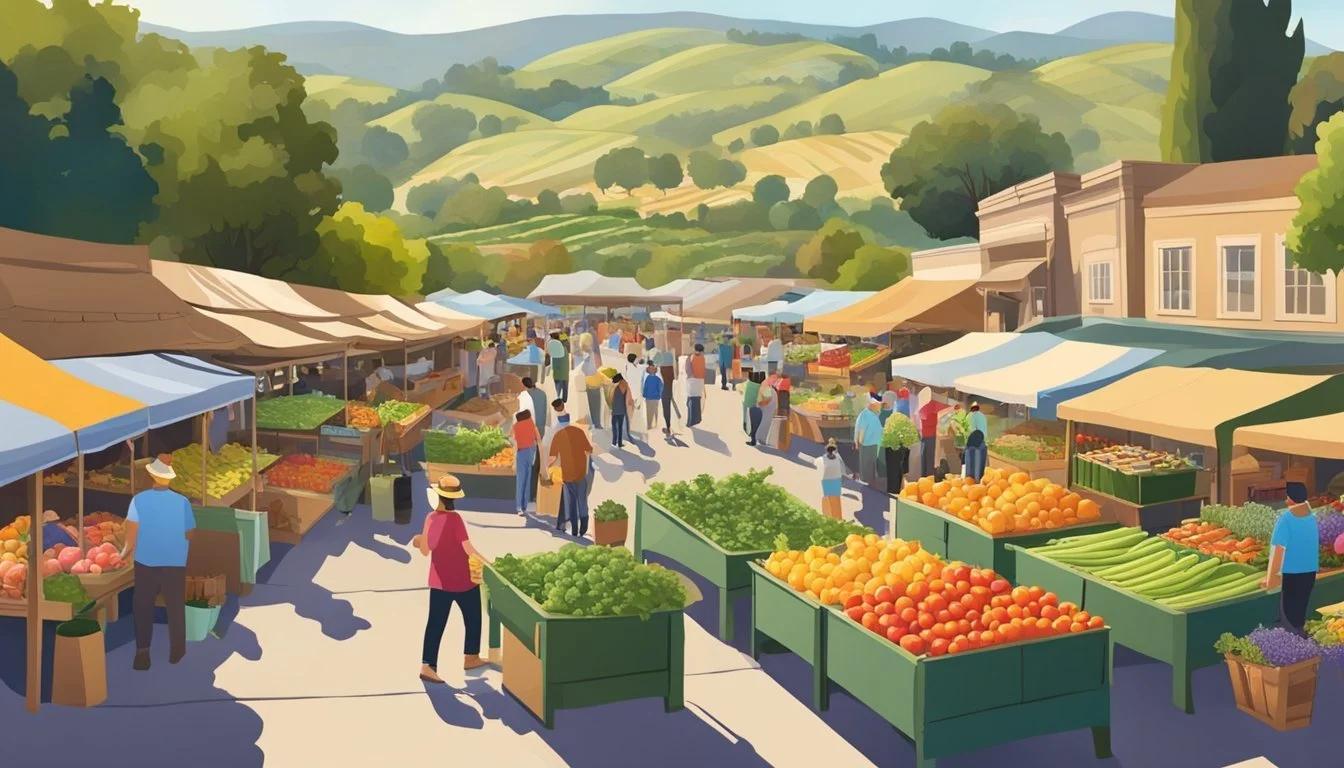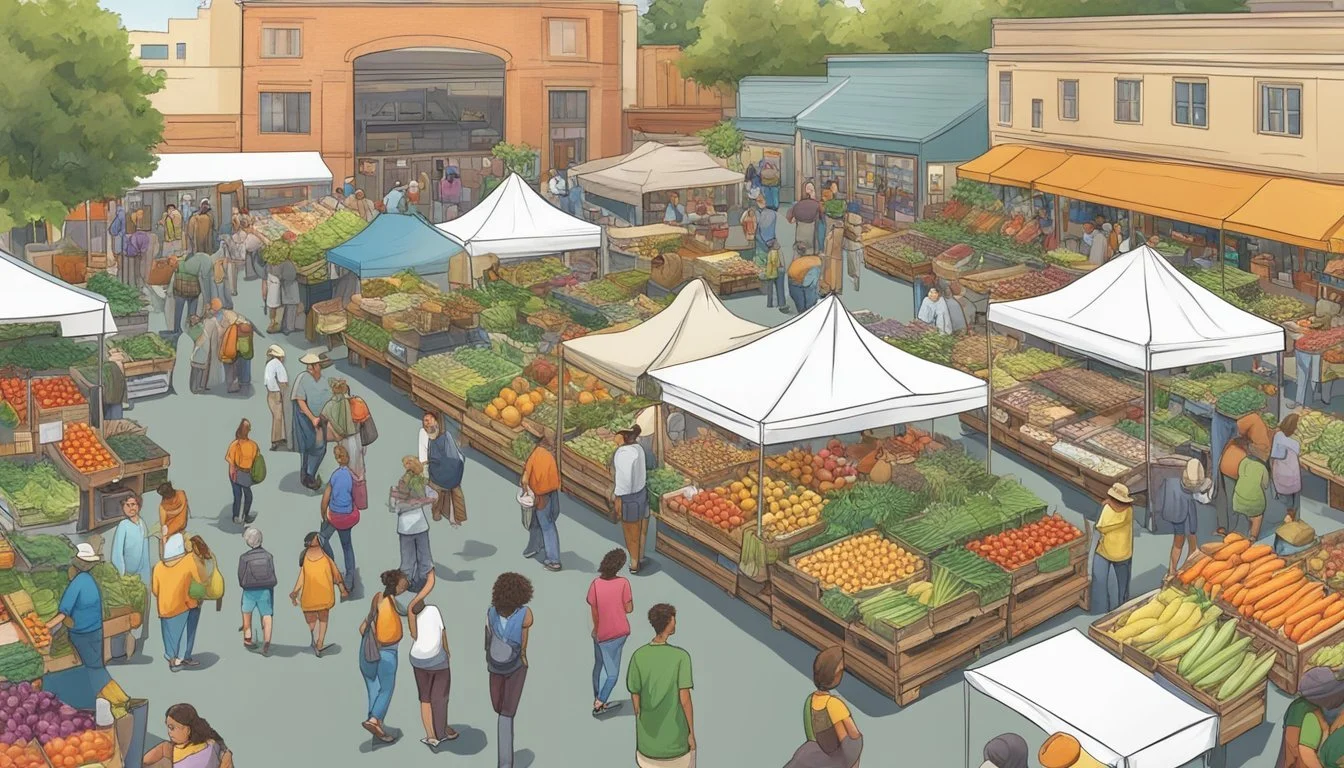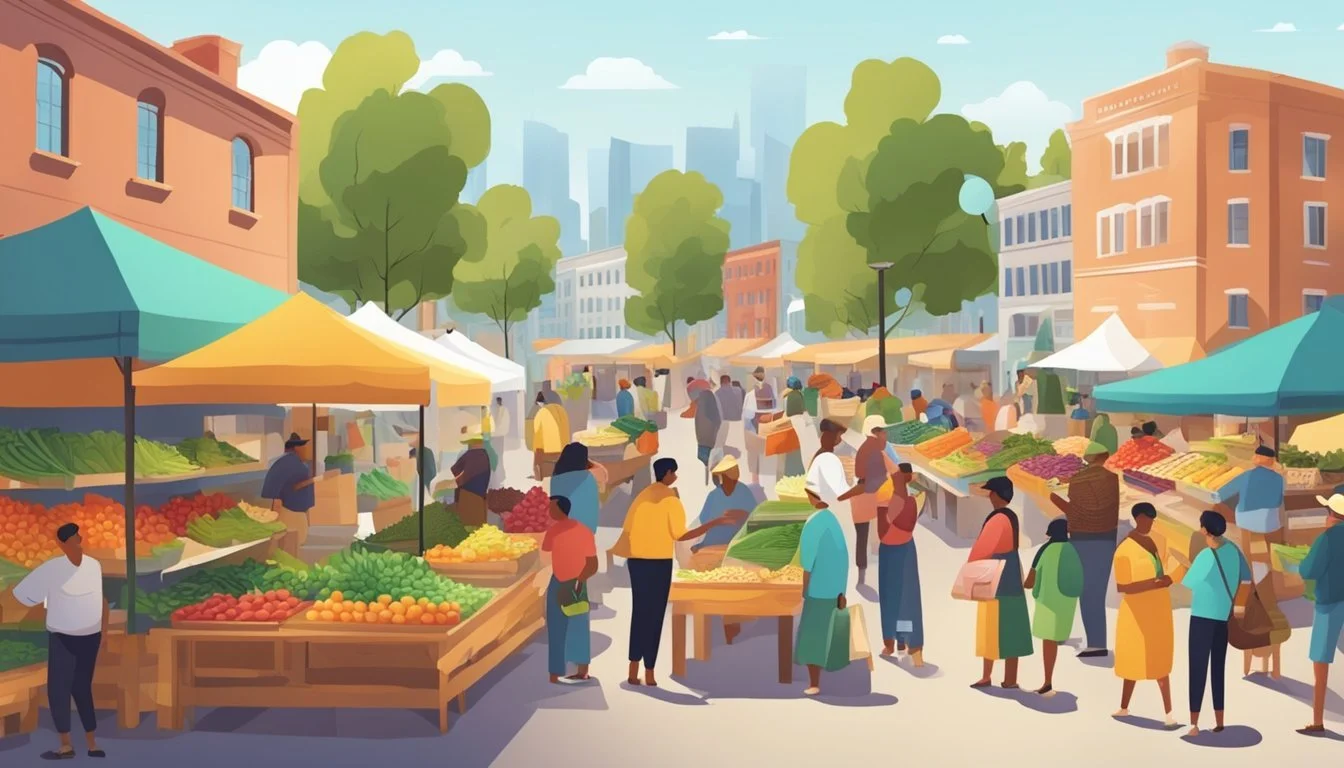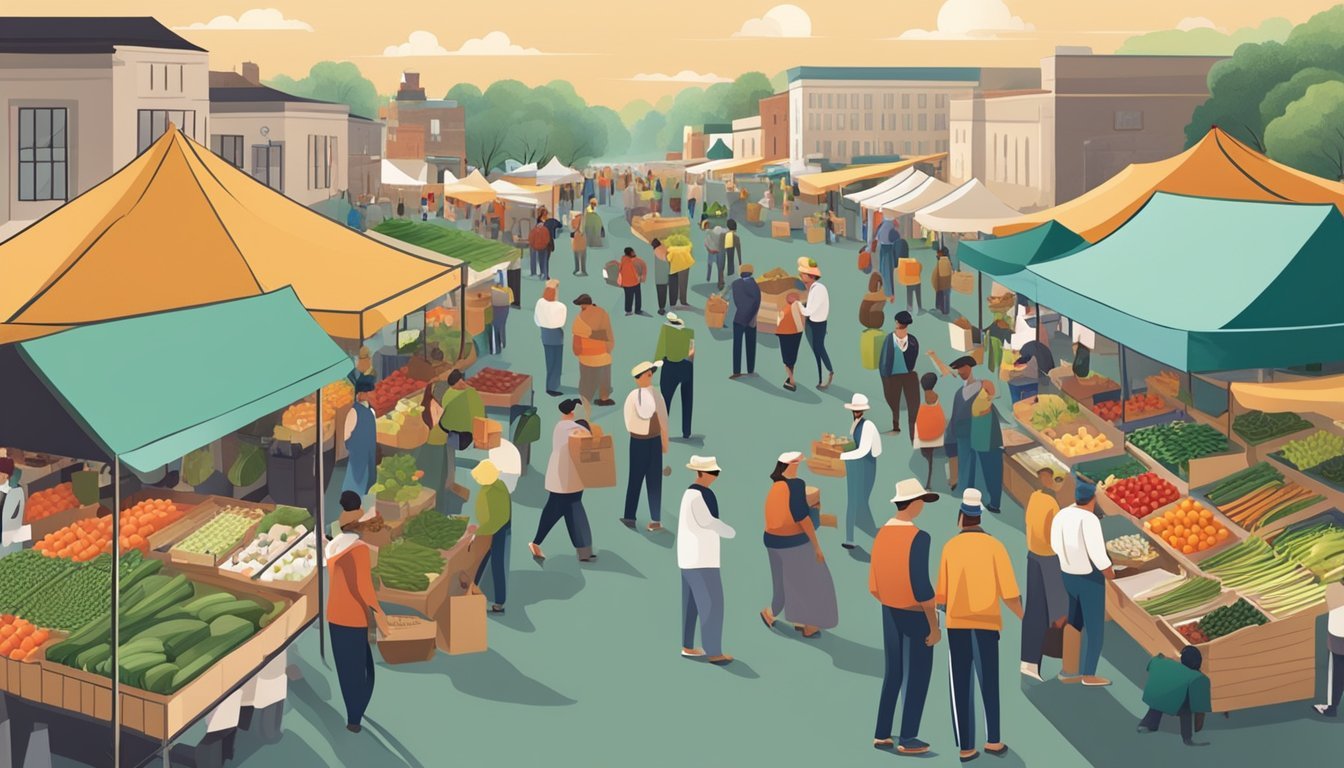Community Supported Agriculture (CSA) in Santa Rosa, CA
A Guide to Local Food Partnerships
Community Supported Agriculture, commonly known as CSA, offers residents in Santa Rosa, CA, a unique opportunity to indulge in the locality's rich agricultural offerings. Through CSA programs, consumers can purchase shares from local farms, which in turn provides them with a regular allotment of fresh, seasonal produce throughout the farming season. This model fosters a direct partnership between the farmer and consumer, promoting a healthier food system that benefits the local economy and the environment.
Santa Rosa, nestled in the heart of Sonoma County, is a prime location for CSA programs due to its conducive climate and fertile lands that yield a diverse range of vegetables, fruits, and flowers. The area's CSA farms often implement sustainable farming practices that contribute positively to the surrounding wetland ecosystems. Subscribers to these CSA programs have the satisfaction of knowing they are supporting local agriculture and receiving nutritious food directly from its source.
Moreover, the CSA model in Santa Rosa has grown beyond simply providing weekly food deliveries; it embodies a commitment to health, community engagement, and agricultural education. By joining a CSA, members in Santa Rosa not only guarantee themselves a share of high-quality produce but also partake in a movement that champions sustainable farming and tight-knit community connections.
What Is Community Supported Agriculture?
Community Supported Agriculture (CSA) represents a collaboration between local farmers and their surrounding communities. It's a model that facilitates the direct purchasing of fresh, often organic produce, while championing sustainable farming practices.
CSA Concept and History
The CSA model was initially developed to foster a closer partnership between farmers and consumers. Originating in the early 1960s in Germany, Switzerland, and Japan, CSA's ethos is grounded in the need to support local food production and reduce the distance food travels. It became popular in the United States in the 1980s, and today, thousands of farms offer CSA membership, wherein consumers can purchase a "share" of the produce at the start of the growing season.
Benefits of CSA to Consumers and Farmers
Consumers benefit from a CSA by receiving weekly or bi-weekly deliveries of fresh, often organic produce, typically at a lower cost than retail due to eliminated shipping and processing fees. They are also exposed to a wider variety of produce and connect with the source of their food. Farmers, on the other hand, benefit from the advance payment for shares, which aids in upfront season planning and provides financial stability. The risk of farming is also shared with the community, creating a safety net during poor harvests.
CSA Models
Various CSA models exist, tailored to the needs of different communities and farms:
Traditional CSA: Members pay in advance for a season’s worth of produce and share the risks and benefits of food production.
Market-Style CSA: Members choose their produce, often in a market setup, using credits correlating with their membership level.
Box-Share CSA: Pre-packed boxes of produce are delivered to members or pickup locations on a scheduled basis.
These models underscore a commitment to sustainable and accessible local food systems. By fostering direct farmer-to-consumer relationships, CSAs in Santa Rosa, CA, and beyond reinforce a more resilient and connected food community.
Local Impact of CSA
Community Supported Agriculture has become an integral part of the Santa Rosa landscape, fostering economic resilience, promoting environmental stewardship, and enhancing social cohesion within the local community.
Economic Effects
In Santa Rosa and the greater Sonoma County, CSAs are instrumental in ensuring economic vitality on two fronts: the stability of local farms and the availability of fresh produce to the community. By purchasing shares, community members provide local farms with a dependable cash flow, which helps them plan and sustain their operations. This investment stays within the local economy, creating a multiplier effect that bolsters not just the farms but also associated businesses.
Environmental Stewardship
Santa Rosa's CSA programs are pivotal in maintaining ecological balance and advocating for sustainable agriculture. Farms engaged in CSA practices often prioritize organic farming methods that contribute to healthy soil and reduced chemical use. The Laguna de Santa Rosa and other critical ecosystems benefit from such farming practices since sustainable methods equate to fewer pollutants in air and water, and better land use that respects the area's biodiversity.
Social and Community Benefits
Community Supported Agriculture fosters a sense of community in Santa Rosa by connecting residents directly with food producers. This bond enhances equity as it allows consumers to know where their food comes from, encourages the consumption of healthy, locally-grown products, and stimulates civic engagement. Residents who participate in CSA programs often report a heightened awareness of food systems and an increased commitment to supporting their local community.
How CSAs Work in Santa Rosa
Community Supported Agriculture in Santa Rosa follows a structured, seasonally-driven subscription model, enabling residents to access fresh, local produce directly from farmers.
Membership and Subscription
Membership for a CSA in Santa Rosa generally requires individuals to purchase a subscription or a "share" at the beginning of the growing season. By doing so, members support the farm financially upfront, which in turn helps the farm to plan for the season, purchase seeds, and cover other early-season costs. This model promotes a direct farm-to-consumer experience and fosters community involvement.
Subscription Types for Santa Rosa CSAs include:
Full Shares: Ideal for families or those with a vegetarian/vegan diet.
Half Shares: Suitable for individuals or small households.
Market Shares: Members can choose their products at the farm stand.
Types of CSA Shares
CSAs in Santa Rosa typically offer a variety of shares that may include not just a box of vegetables, but also fruits, eggs, and other farm products. The contents of these shares are based on seasonal availability and include:
Spring Share: Might contain leafy greens, herbs, and spring onions.
Summer Share: Likely includes a wide variety of vegetables such as tomatoes, peppers, and zucchini.
Fall Share: Features root vegetables, squashes, and late-season greens.
Distribution and Pickup Sites
CSAs in Santa Rosa distribute their produce via designated pickup sites. These sites are often strategically located for convenient access and include:
On-farm Pickup: Members collect their shares directly from the farm.
Local Market Pickup: Boxes are delivered to local markets where members can take their share.
Community Drop Points: Specific locations in neighborhoods where boxes are dropped off for member pickup.
Subscribers typically receive a weekly or biweekly box of vegetables and are notified in advance about the pickup times. Some farms also offer farm to market services that give subscribers the option to buy additional products at pickup sites.
Santa Rosa CSA Farms and Products
Santa Rosa boasts a vibrant community supported agriculture (CSA) scene, with numerous farms focusing on sustainable and organic practices. These programs offer fresh, locally grown produce ranging from fruits and vegetables to eggs and flowers, reinforcing the connection between farmers and the community.
Directory of CSA Programs
Santa Rosa and the surrounding area have a variety of CSA programs that connect consumers directly with local farmers. Here’s a brief directory:
Laguna Farm: Located near Laguna de Santa Rosa, this farm delivers fresh vegetables to over 450 subscribers and sells goods at local stores and farm markets.
Crescent Moon Farm: This farm specializes in open-pollinated and heirloom varieties of produce, operating on a small scale in Rincon Valley.
Range of Products Offered
Santa Rosa CSA farms offer a diverse array of products, with an emphasis on organic and sustainably farmed produce. Subscribers can expect to find the following:
Vegetables: A variety that includes both common and heirloom species.
Fruits: Seasonal selections from berries to stone fruits.
Herbs: Fresh herbs enhance culinary flavors.
Flowers: Available at certain farms to brighten homes and tables.
Chicken and Eggs: Some farms include pasture-raised poultry and eggs in their CSA boxes.
Seasonal Availability
The seasonal nature of CSA programs means that the availability of products changes throughout the year. Each farm offers a unique timeline based on its range of goods:
Spring: Features tender greens, strawberries, and the beginning of the fresh herb season.
Summer: Boasts a bounty of tomatoes, zucchini, stone fruits, and more.
Fall: Brings root vegetables, pumpkins, and late-season fruits.
Winter: Typically quieter, but some farms may offer winter vegetables like kale and potatoes, along with stored crops such as onions and apples.
Organic Practices in CSA Farming
Community Supported Agriculture (CSA) farms near Santa Rosa adhere to environmentally sustainable protocols, leveraging organic practices to deliver healthful produce to their communities.
Organic Certification and Compliance
Organic certification serves as a keystone in CSA farming, assuring consumers that their organic produce meets rigorous standards. Farms have to comply with established regulations that prohibit synthetic herbicides and pesticides, ensuring that the food is grown without harmful chemicals. About 44% of CSA farms in California boast official organic certification, while an additional 38% voluntarily adhere to organic rules despite not having formal certification.
Ecological Farming Methods
CSA farms often engage in ecological farming methods, including the use of natural compost to nourish the soil, which imbues their produce with rich flavor and nutrients. Diverse vegetable farms near the Laguna de Santa Rosa integrate sustainable farming practices in significant wetland ecosystems, contributing to environmental preservation and biodiversity.
Integrated Pest Management: Utilizing predator insects or manual removal over chemical-based repellents.
Crop Rotation: Sustaining the health of the soil and reducing disease prevalence.
Cover Cropping: Natural way to manage soil fertility and prevent erosion.
Impact on Health and Environment
Research indicates that CSA farms' utilization of organic methods positively impacts the health of consumers and the environment. By avoiding synthetic inputs, these farms promote ecological resilience and foster a community that is more connected to the local food system. The impact is significant, from improving the nutritional value of food to supporting a sustainable ecosystem that benefits both present and future generations.
Community and Educational Initiatives
In Santa Rosa, CA, Community Supported Agriculture (CSA) initiatives actively engage in community development and educational programs, focusing on sustainable agriculture and local food systems. These initiatives foster partnerships between farmers, families, and schools, and are an integral part of developing a robust local food education curriculum.
CSA Programs in Schools
Many schools in Santa Rosa have incorporated CSA programs into their curriculum to educate students about nutrition and sustainable agriculture practices. These programs often involve a farm-to-school partnership, where fresh, seasonal produce is delivered to the schools, giving families and students access to healthy food while supporting local farmers. This hands-on approach not only provides nutritional benefits but also enhances students' understanding of where their food comes from and the importance of local food systems.
Workshops and Farm Visits
CSAs in Santa Rosa host workshops and encourage farm visits as a form of community outreach and education. These workshops may cover a range of topics such as composting, gardening, and sustainable farming techniques. Farm visits offer a demonstration of CSA farming practices in action, giving community members an opportunity to learn directly from farmers. This hands-on experience is instrumental in fostering a deeper connection between the community and the local agricultural sector.
Volunteering and Internship Opportunities
CSAs in Santa Rosa offer volunteering and internship opportunities to those interested in getting more involved with local agriculture. These opportunities allow individuals to gain practical experience in farming and sustainable agriculture. Moreover, participation in these programs can lead to a stronger understanding of community supported agriculture, empowering individuals with knowledge that can be applied in their own gardens or future agricultural endeavors. These programs also contribute to the overall health and connectedness of the Santa Rosa community, through the sharing of labor and learning.
Advocacy and Assistance for CSA Farms
Community Supported Agriculture (CSA) in Santa Rosa plays a pivotal role in sustaining local agriculture and providing the community with fresh produce. CSA farms receive support through policy advocacy, technical assistance, and a network of collaborative resources, enabling them to thrive in a competitive market.
Policy Support and Legal Assistance
Policy support and legal assistance are vital for the success and longevity of CSA farms. The CSA Innovation Network and organizations like Community Alliance with Family Farmers (CAFF) work to advocate for policies that benefit CSA operations. One key figure in this arena is Michelle Wyler, who is known for her involvement in promoting the needs of CSA farmers at a legal and policy-making level, especially in the San Francisco Bay Area.
Membership with CAFF: Provides CSA farmers with policy advocacy, and legal assistance specific to their needs.
Latino Farmer Programming: Specialized support for Latinx farmers like Josefina Lara Chavez to ensure the legislation is inclusive.
Technical Support and Resources
Technical support is particularly significant in the operation and success of CSA farms. CSA farms often have access to a variety of technical assistance and resources through their network memberships.
Technical Assistance: Offered by CAFF and others, involves aiding CSA farms with the knowledge and tools they need to operate efficiently.
CAFF's Resources: Include guides and toolkits for CSA best practices and sustainability aimed at both urban farmers and those in rural areas.
Networks and Collaboration
Networking and collaboration foster a sense of community and resource-sharing that is crucial for CSA farms. The development of partnerships allows for sharing of best practices, increased market opportunities, and collective problem-solving.
CSA Innovation Network: Connects CSA practitioners for the exchange of innovative ideas and strategies.
Collaboration with Local Entities: CSA farms in Santa Rosa benefit from connecting with like-minded organizations and urban farmers which provides stronger ties within the community and socially conscious programming.
By leveraging the combined efforts in advocacy, technical support, and networking, CSA farms in Santa Rosa are equipped to address challenges and seize opportunities in the evolving agricultural landscape.
Sustainability and Future of CSA
Community Supported Agriculture in Santa Rosa, CA, continues to evolve with a focus on sustainable farming practices and a commitment to building robust community relationships. It addresses the local market's demand for fresh produce while upholding environmental stewardship.
Trends and Innovations in CSA
In Santa Rosa, CSA programs are incorporating advancements in sustainable farming, such as water-efficient irrigation systems and organic pest control. These innovations help maintain soil health and biodiversity, ensuring long-term productivity of the land. Research in sustainable methods is often shared within the CSA community, leading to a collective growth in knowledge and practices.
Building Long-Term Relationships
The success of CSAs is deeply anchored in the partnership between farmers and consumers. Members who purchase shares are directly supporting the local agriculture economy and receiving fresh, seasonal produce in return. CSAs encourage community members to take on the role of stakeholders, fostering a sense of responsibility and investment in the farm's future.
Challenges and Opportunities
CSAs face challenges such as market competition and climate variability. However, these challenges present opportunities for CSAs to innovate and adapt. The community’s support is pivotal in enabling farmers to overcome such hurdles. Future prospects for CSAs depend on a nuanced understanding of local needs and the capacity to responsibly manage resources.
Supporting CSA beyond Santa Rosa
Community Supported Agriculture (CSA) models in Santa Rosa have been instrumental in connecting the community with local food sources. As CSAs in Santa Rosa flourish, there are efforts to extend the benefits of these systems throughout greater Sonoma County and beyond, enhancing food access and supporting ecological farming practices.
CSAs in Greater Sonoma County
Sonoma County, known for its rich agricultural heritage, boasts several CSAs that contribute to both the local market and community well-being. Valley End Farm, located on the outskirts of Santa Rosa, serves as a prime example of CSA success, offering a diverse array of vegetables to its subscribers and emphasizing ecological farming techniques. Initiatives to connect more consumers and farmers have seen a surge, fostering a stronger, more resilient local food system.
Expanding CSA Access
Efforts underway to expand CSA access include:
Educational Outreach: Increasing awareness of the benefits of CSA membership through targeted campaigns.
Financial Support: Establishing subsidy programs to make CSA shares more affordable for low-income households.
Expanding access to CSAs is a multifaceted approach, focusing both on education and finance to ensure that more members of the community can participate. Whether through providing information on the value of locally-grown food or creating financial structures that make shares accessible, Sonoma County is spearheading initiatives to broaden the CSA model's reach.
Connecting with Other Food Systems
Community Supported Agriculture in Santa Rosa and the wider Sonoma County is not an isolated entity—it connects and intertwines with other food systems within California. By fostering relationships between CSAs and local stores, farm markets, and even restaurants looking to source sustainably, there's a concerted effort to create a cohesive network. This network leverages ecological farming practices to deliver fresh, seasonal produce while supporting local agriculture and reducing environmental impact.


